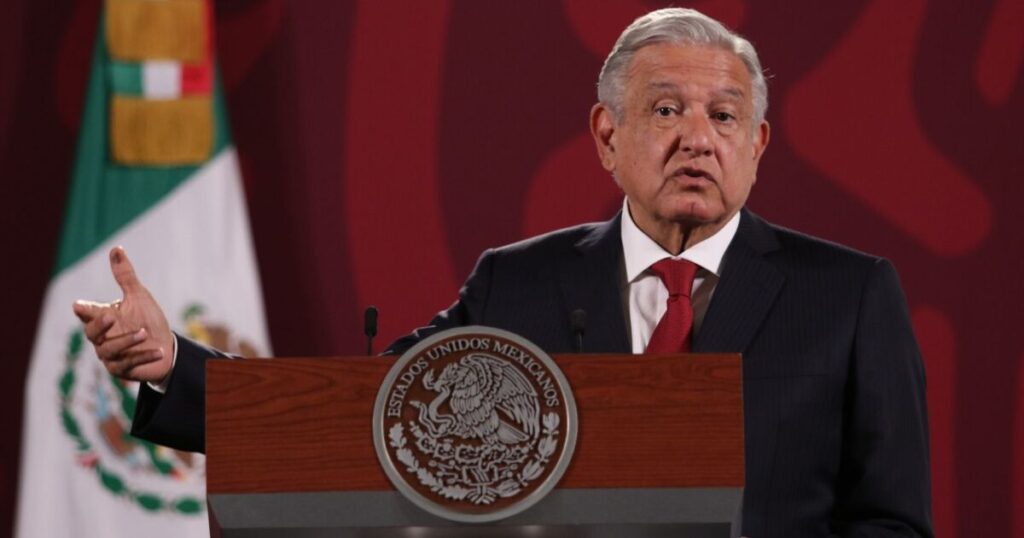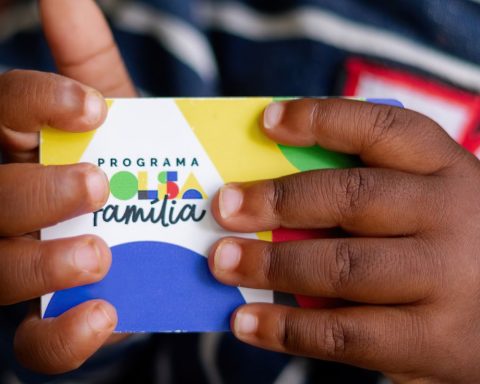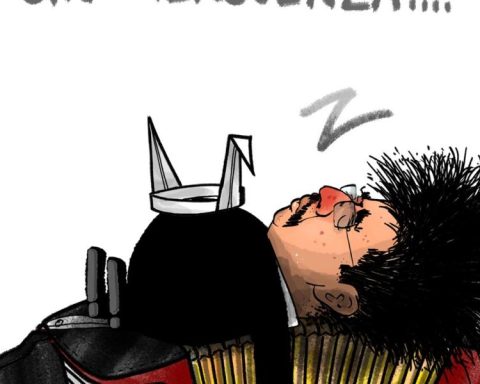A multitude of Catholic faithful participated in the traditional Good Friday Stations of the Cross, which departed from the Plaza de Las Victorias towards the Metropolitan Cathedral of Managua, in a shorter route than usual and after two years of absence of faithful due to the pandemic of covid-19.
This time the devotees carried on their shoulders a picture with a painting of the image of the Blood of Christ, and at their feet, in a glass urn, the relic of that image burned on July 31, 2020 in his chapel in the Managua Cathedral in a fire that the Catholic Church described as a terrorist act, but that the authorities determined would have been accidental.
Monsignor Miguel Mántica, of the Archdiocese of Managua, explained that the penitential way of the cross this Good Friday was offered for “peace based on justice in our country,” as well as the end of the war between Russia and Ukraine.
Mántica also celebrated the massive participation of the Catholic people despite the coronavirus pandemic and the state of uncertainty experienced by the Nicaraguan population due to the sociopolitical crisis.
“We expected a large confluence of people, but what we have seen has exceeded our expectations,” said Mántica. “There is an overflow of the Catholic people who come to find Christ Jesus in that venerated image, in that consecrated image that is now charred, but that is here in that urn,” he added.
During the tour, the priests of the Archdiocese of Managua prayed for the Nicaraguan families that are broken due to migration or because they have relatives in jail.
“Let us pray for all those migrants, let us also pray for all the unemployed, for the families that cannot bring their daily bread home because neither father nor mother have a decent job. Let us also pray for the families who have relatives in prison deprived of their liberty because they have been justly convicted or —perhaps— they have been unjustly convicted, without having committed any crime,” said a priest at the entrance to the cathedral.
Meanwhile, Cardinal Leopoldo Brenes, who prayed the last station of the cross, urged those present to forgive and love the enemy. “Lord, console the pain of those who suffer, make the decisions of those who govern the countries of the world correct, touch the hearts of those who forget that we are brothers and cause suffering and death. Give us all the gift of conversion, the gift of forgiveness,” he said.
Migration, health and strength
The procession – which commemorates the ordeal of Jesus Christ before being crucified – was guarded by hundreds of policemen and during the route, approximately one kilometer long, the faithful walked barefoot on the burning pavement, others marched on their knees, others advanced with their eyes blindfolded and walking backwards, and there were those who carried crosses or dressed in robes similar to that of the Nazarene.
#Nicaragua | With the charred remains of the face of the image of the Blood of Christ, hundreds of Nicaraguans take to the streets of Managua to pray the Stations of the Cross after the break due to covid-19. https://t.co/5iW9Mdwlfu pic.twitter.com/wN6fiTGXz3
— Confidential Nicaragua (@confidencial_ni) April 15, 2022
Devotees like Katherine Soza, who made the journey on her knees, said that she asked the Lord for “a better job” for her husband, who migrated to the United States, in the midst of the sociopolitical crisis that Nicaragua has been experiencing since April 2018.
“I pay a promise for my mother, who is very ill, and the Lord is the one who takes care of her, so I thank Him who keeps her alive for me,” said María Jesús Rodríguez, another promiser who was with her blindfolded and walking backwards towards the Cathedral of Managua and facing the painting with the image of the Blood of Christ.
Luisa del Carmen Chavarría, another promisee, blindfolded herself and walked barefoot for a kilometer, and once in the temple, she did so on her knees.
“I am beginning to pay a promise today for the eternal rest of my father, who has been deceased for five days, and so that the Lord gives me the strength to move forward and for our family,” he explained.
First time without the image of the Blood of Christ
Cardinal Brenes decided that most of the relic of the ancient image of the Blood of Christ should remain in the Cathedral of Managua to keep it intact.
“This painting does not come to replace our historical image burned by hatred,” said Brenes, also Archbishop of Managua, last Friday during the consecration of the new image.
Hundreds of Catholics arrive at the Metropolitan Cathedral of Managua, after praying the Stations of the Cross this Good Friday. The attendees have called for peace and asked for those who – like Christ – pay unjust sentences. https://t.co/9QGRE3DSIf pic.twitter.com/s2zI2yr4fs
— Confidential Nicaragua (@confidencial_ni) April 15, 2022
The burning of the image of the Blood of Christ, with 383 years of history and representing Jesus crucified, was preceded by a wave of desecrations against Catholic temples in Nicaragua, which aroused suspicion in the leaders and with it another chapter was opened disagreements with the ruling Sandinista National Liberation Front (FSLN).
Brought from Guatemala on July 4, 1638, the image of the Blood of Christ, made of polychrome wood and which was initially praised as “The Lord of Miracles”, was venerated by Saint John Paul II in 1996, when it was knelt and prayed at his feet, during his second visit to this majority-Catholic country.
With information from Eph.

















